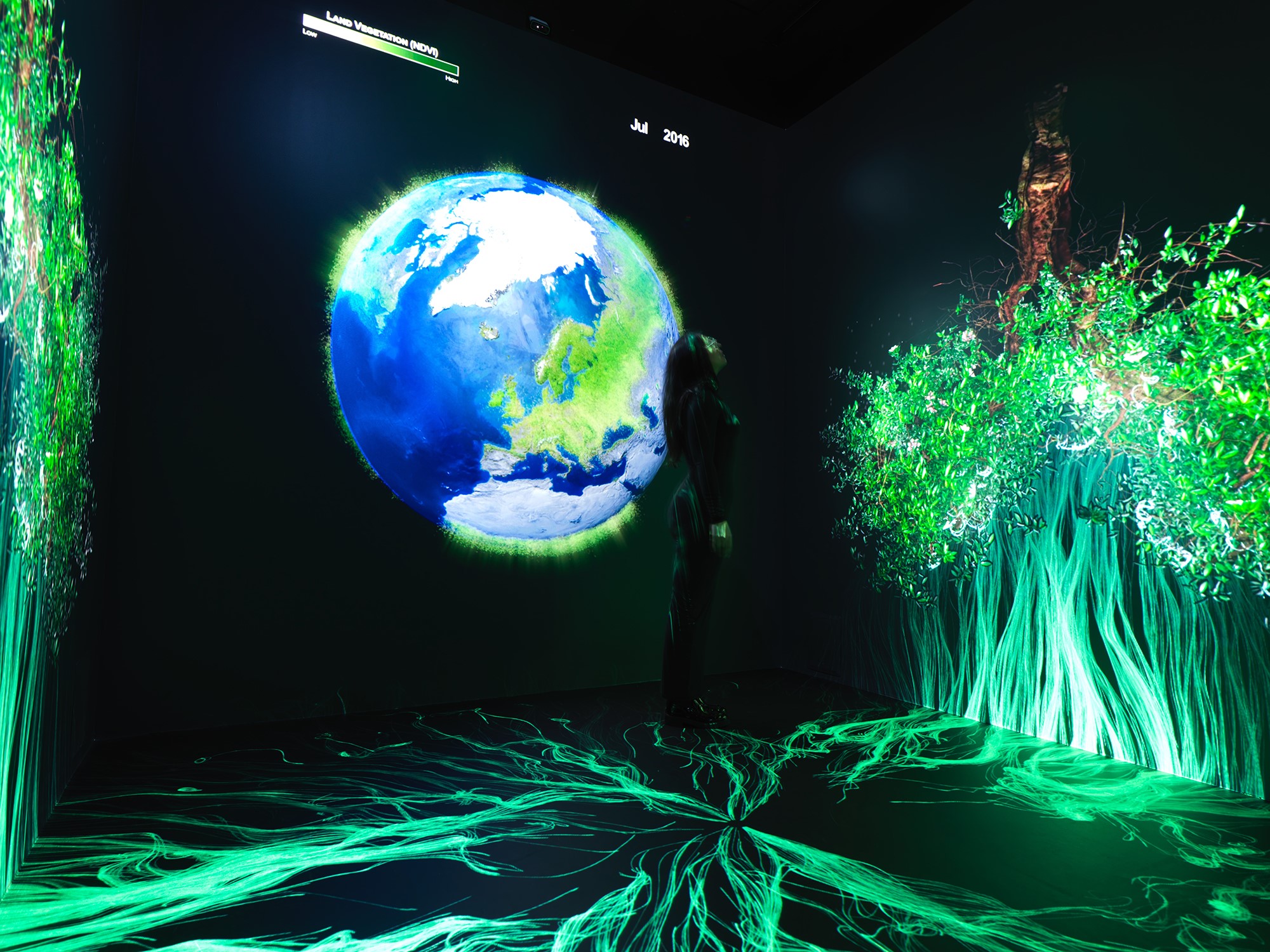NASA to Open Earth Information Center at Smithsonian National Museum
NASA is set to unveil a groundbreaking Earth Information Center at the Smithsonian National Museum of Natural History in Washington, D.C. The media is invited to preview and interview NASA leadership ahead of the official opening, scheduled for Monday, October 7, at 10 a.m. EDT.
The 2,000-square-foot exhibit promises to be a comprehensive resource for understanding Earth’s changing environment. One of the highlights of the exhibit is a massive 32-foot-long, 12-foot-high video wall that will display various visualizations and videos related to Earth science data. Additionally, there will be an interpretive panel that showcases Earth’s interconnected systems, offering visitors an overview of how different elements of our planet interact with each other.
Attendees will also have access to information on global changes and insights into how NASA and the Smithsonian work together to study Earth. The exhibit will feature interactive experiences that allow visitors to explore Earth observing missions, changes in Earth’s landscape over time, and regional climate change projections.
Event Details and Media Participation
The event will take place at the Smithsonian National Museum of Natural History located at 1000 Constitution Ave. NW, Washington, D.C., from 10 a.m. to 3 p.m. Members of the media who are interested in attending should reach out to Liz Vlock via email. NASA’s media accreditation policy is available online for those needing additional information.
Media interviews with key participants will be available at the following times:
– 10 a.m.: NASA Administrator Bill Nelson
– 10 a.m.: Kirk Johnson, Director, Museum of Natural History
– 10:30 a.m.: Karen St. Germain, Division Director, NASA Earth Sciences Division
– 10:30 a.m.: Julie Robinson, Deputy Director, NASA Earth Sciences Division
Collaborative Efforts and Objectives
The Earth Information Center is an initiative that draws insights from various NASA centers and its partners, including the National Oceanic and Atmospheric Administration (NOAA), U.S. Geological Survey (USGS), U.S. Department of Agriculture (USDA), U.S. Agency for International Development (USAID), Environmental Protection Agency (EPA), and Federal Emergency Management Administration (FEMA). This collaboration aims to provide a comprehensive view of how our planet is changing, thus equipping decision-makers with the necessary information to develop tools for mitigating, adapting, and responding to climate change.
Purpose and Accessibility of the Earth Information Center
The Earth Information Center serves as both a virtual and physical space where people can access crucial information about Earth’s environment and climate. Designed to be user-friendly and scalable, the center aims to foster a global understanding of our changing planet. By making Earth science data readily accessible, the center helps individuals and organizations make informed decisions regarding environmental and climate issues.
Expansion and Location
The Smithsonian National Museum of Natural History marks the second physical location of NASA’s Earth Information Center in the Washington area. The first center is situated at NASA Headquarters at 300 E St., SW, Washington, D.C. This expansion reflects NASA’s commitment to making Earth science data more accessible to the public and policymakers.
For more information about the Earth Information Center, visit the official website at https://earth.gov.
Good to Know: The Importance of Earth Science Data
Understanding Earth science data is crucial for several reasons. It helps us comprehend the complexities of our planet’s systems and the impact of human activities on these systems. Earth science data is essential for predicting weather patterns, understanding climate change, managing natural resources, and preparing for natural disasters.
For instance, satellite imagery and data collected by NASA play a significant role in monitoring deforestation, tracking the melting of polar ice caps, and observing oceanic changes. This information is vital for scientists, environmentalists, and policymakers who work tirelessly to develop strategies for environmental conservation and sustainability.
The Earth Information Center’s interactive exhibits provide a unique opportunity for visitors to engage with this data in a meaningful way. By visualizing changes in Earth’s landscape and climate over time, visitors can gain a deeper appreciation of the challenges our planet faces and the importance of taking action to protect it.
Reactions and Reviews
The opening of the Earth Information Center has garnered positive reactions from various stakeholders. Scientists and educators have praised the center for its potential to enhance public understanding of Earth science. Environmentalists see it as a valuable tool for raising awareness about climate change and the urgent need for sustainable practices.
Visitors to the existing center at NASA Headquarters have reported an enriching experience, with many finding the interactive displays particularly engaging. The expansion to the Smithsonian National Museum of Natural History is expected to attract even more visitors, offering them a chance to learn about Earth’s environment in an immersive and informative setting.
In summary, the Earth Information Center at the Smithsonian National Museum of Natural History is a significant step forward in making Earth science data accessible and understandable to the public. It represents a collaborative effort between NASA and its partners to provide valuable insights into our changing planet. By visiting the center, individuals can gain a greater understanding of the environmental challenges we face and the actions needed to address them.
For further details, visit the Earth Information Center’s official website at https://earth.gov.
For more Information, Refer to this article.
































